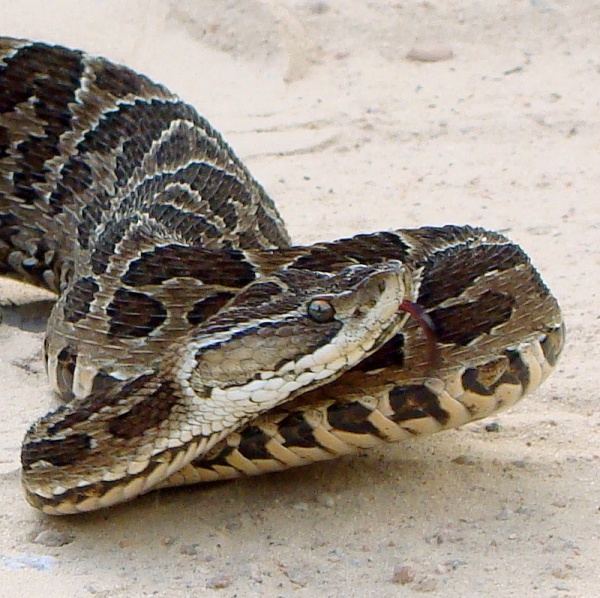Facts About Urutu
Meet the Yarará Grande: South America's Venomous Pit Viper
The Bothrops alternatus, commonly known as the yarará grande, urutu, wutu, or crossed pit viper, is a venomous snake native to South America. It is a significant contributor to snakebites in the region. The name "alternatus" is derived from the staggered pattern of markings on its body. Notably, there are no recognized subspecies of this snake.
Description:
- Size and Build: This snake is robust and can be quite large, with some individuals reportedly exceeding 2 meters in length. The longest verified length is 169 cm.
- Color and Markings: The color of the yarará grande can vary widely, ranging from brown, tan, or gray, sometimes with an olive tint. The head features keeled intersupraocular scales and distinct color patterns, while the body markings resemble crosses, enclosures, or even headphones. A dark stripe extends along the ventral surface from the neck to the tail tip.
Common Names:
- Depending on the region, this snake is known by various names, including urutu, wutu, boicoatiara, cruzeira, and mbói-cuatiá.
Geographic Range:
- Habitat: This species is found in southeastern Brazil, Paraguay, Uruguay, and northern Argentina. It thrives in both tropical and temperate forests, favoring marshes, swamps, riparian zones, and other humid habitats. It is also commonly encountered in sugarcane plantations.
Reproduction:
- Birth: Females give birth to live young, with the number of offspring depending on the mother's size. The newborns are brightly colored and capable of delivering a venomous bite from birth.
Venom:
- Effects: Although bites from this snake are rarely fatal, they can cause severe local tissue damage. Symptoms may include prolonged clotting time, bleeding, blistering, and necrosis.
- Treatment: Specific antivenin is used to treat bites. Despite historical claims of high mortality rates, modern statistics indicate a low fatality rate.

 Paraguay
Paraguay